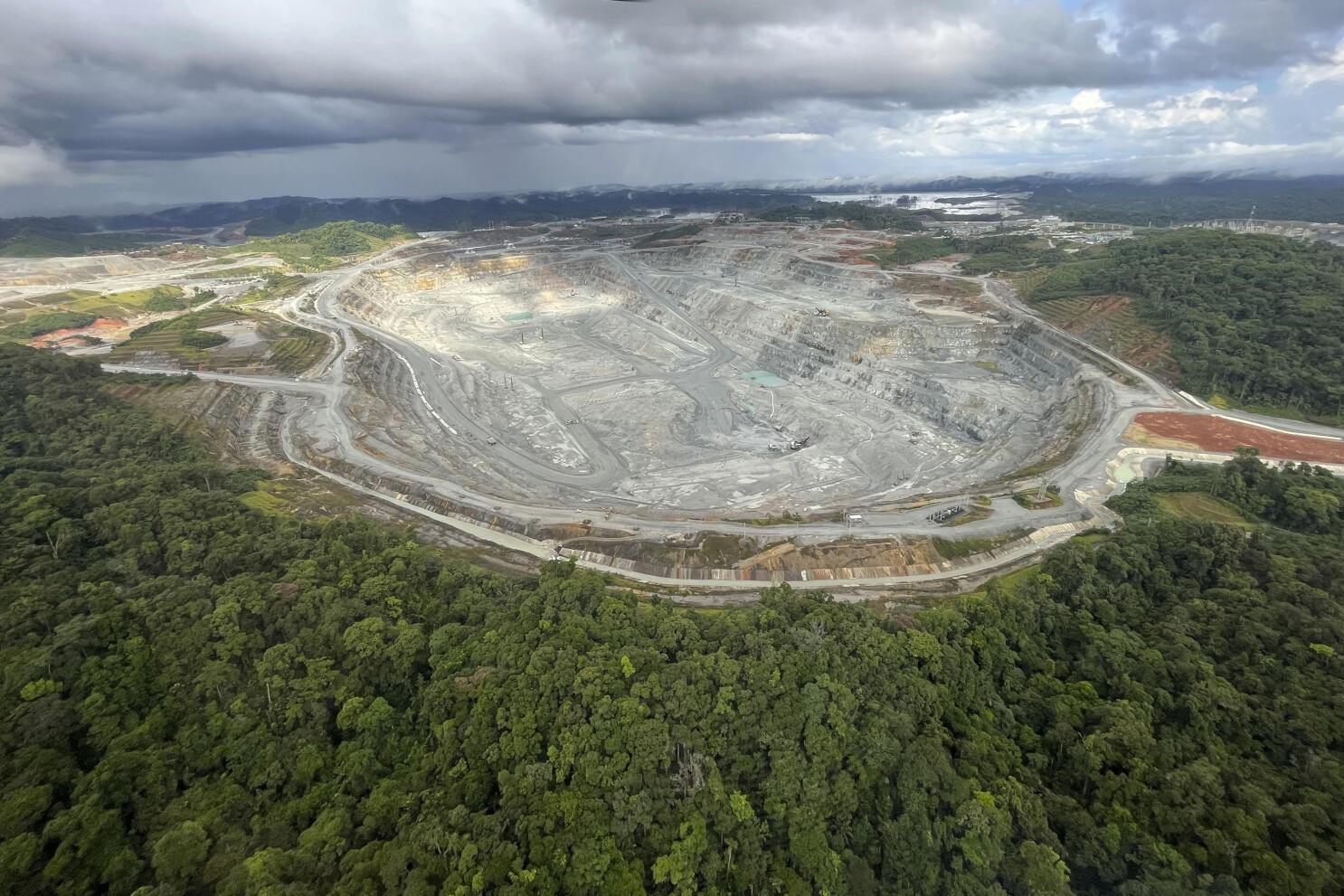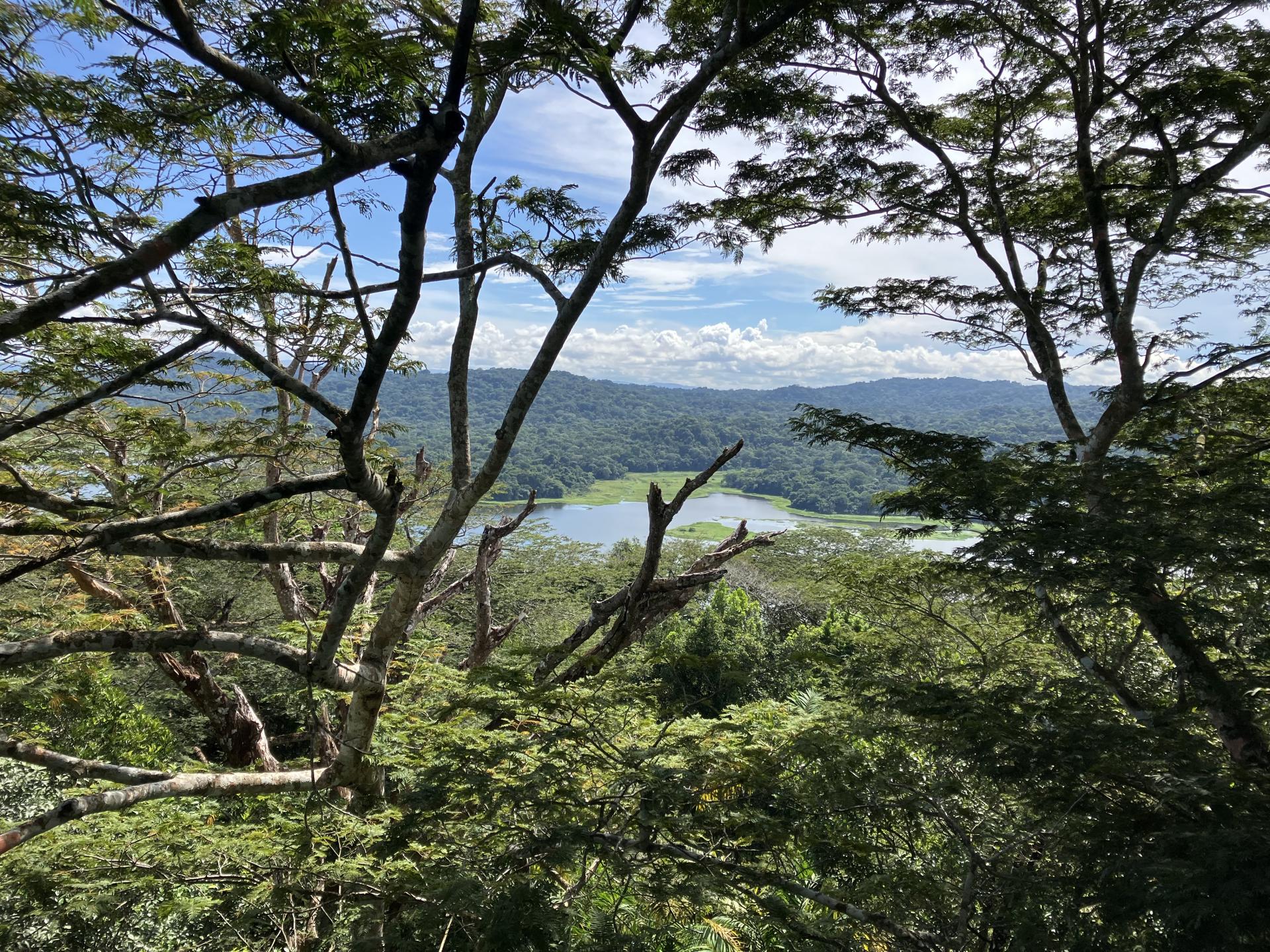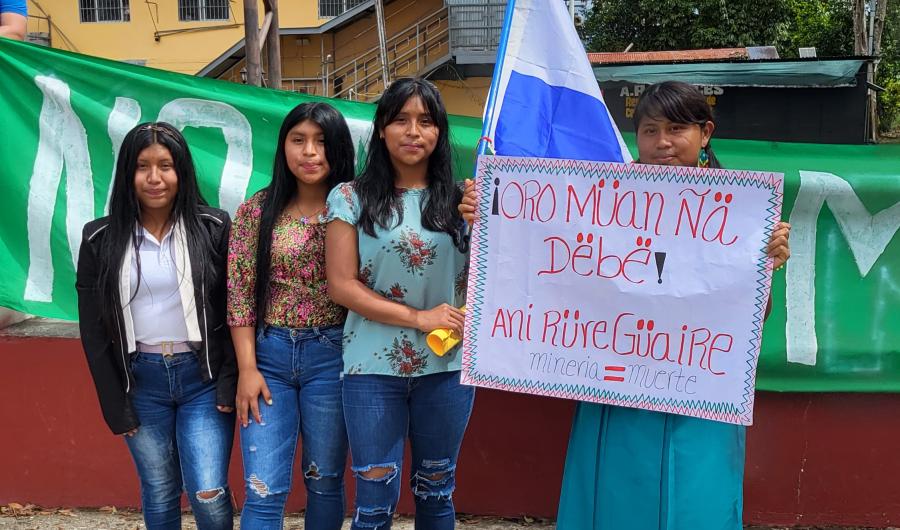By Bobbie Chew Bigby (Cherokee)
In mid-October 2024, Panamanians from across the country poured out into the streets, echoing the protest movement from exactly this time last year that had brought much of Panama to a standstill in late 2023. These citizens were making known their calls for social and economic reforms in the country, including specific assurances for the social security system for retirees and pensioners. Beyond this advocacy for interconnected socioeconomic issues, however, many people also kept alive the spirit of opposition and dissent to a massive copper mine in the center of the country. This mine, owned by Canadian company First Quantum Metals and its subsidiary Minera Panama, sits as an unresolved wound in the literal heart of this isthmus nation and has left it deeply divided.
At this time in 2023, people from across Panama came out into the streets to show their strong opposition to Law 406. This legislation validated the contract between the Minera Panama mining company and the Panamanian government, allowing the company to mine, process, and export copper and other minerals over 20 years, with the possibility to renew for an additional two decades.
But in reality, this copper mine was nothing new for Panama. The mine was first opened back in 1997 and not long after faced challenges from the local NGO, Centro de Incidencia Ambiental de Panamá (CIAM) or Panama’s Environmental Advocacy Center INICIO - CIAM PANAMÁ. CIAM found the initial agreement permitting the project to be unconstitutional given that the mine did not provide enough "public good" for the country in balancing revenues with risks and harm. However, it would take 20 years for the Supreme Court to agree with this and issue its ruling of unconstitutionality in 2017. Despite this unconstitutional ruling, the mine continued extracting, processing, and shipping copper, standing as the largest open-pit mine in Central America and located within the protected tropical forest areas that comprise much of the Mesoamerican Biological Corridor.

An aerial view of the Cobre Panamá mine that sits deep in the tropical rainforest heart of the country. Credit: AP News
Between 2022 and 2023, the Panamanian government made attempts to negotiate a new contract with the mining company, including involving the country’s National Assembly and community consultations. Community members most directly impacted by the mine voiced concerns about potential land loss from the mine, the environmental impacts in the short and long term, including contaminated waterways, as well as the uncertainty around financial benefits that flowed from the mine to Panama. Given the difficult legacy that Panama has had over the last century in finally gaining control over the famed Panama Canal after 95 years of US ownership, Panamanian people are acutely aware of the importance of sovereignty in their everyday lives and economic activities.
After all these years of concern and opposition to the mine, the renegotiated contract was reviewed, approved, and sanctioned within three days, leading to the hasty passage of Law 406 in October 2023. Many in Panama were angered by the rapid approval of a contract that did not change much in practice, but still carried with it enormous environmental and social risks. In response, Panamanians took to the streets in anger—a frustration uniting many people across Panamanian society, from unions and environmental groups to Indigenous communities and youth-led organizations. Over a couple of days, this protest movement grew to the largest that the country had seen since the 1980s with opposition to the Noriega military regime (Panamá: el contrato minero que desató un estallido social - El hilo). As a result, much of the country, including parts of the Pan-American highway and the movement of goods, was brought to a temporary standstill. But importantly, this popular resistance led to the Panamanian President issuing a mining moratorium decree. A couple of weeks later on November 28, a final and definitive ruling from the Supreme Court on the mine’s unconstitutional standing put an end to the mine’s activities (The Fight to Close First Quantum Minerals Canadian Mine in Panama | Cultural Survival).
Yet, what would seem like a straightforward "win" against an environmental threat to Panama, her people and her biodiversity is, in fact, a much more complicated reality involving multiple factors and unresolved challenges. Many Panamanians continue to see this large open-pit copper mine, nearly two times the size of Manhattan, as an environmental hazard sitting amid largely untouched tropical forest. With approximately 65% of the country covered in tropical forests, many of which are protected, Panama takes deep pride in its status as a country of immense biodiversity. In fact, it is only one of three countries in the world that is not simply a "carbon sink," but identified as being "carbon negative" (Panama | Climate & Clean Air Coalition).
In the same breath, however, there are people and communities across Panama that support the mine for a number of reasons. At stake with the mine’s closure is the loss of approximately 7,000 jobs (BBC World Service - Business Daily, Panama's troubled copper mine), with an estimated 40,000 jobs total identified as indirectly and directly connected to the industry. Furthermore, even if the life of the mine is estimated to run 35 years at most, revenues from the mine represented 5% of Panama’s GDP. These revenues reflect a level of economic importance paralleling those from the Panama Canal.
Beyond these big considerations for jobs and the economy, however, copper represents one of the most important ingredients in today’s energy transition. Copper, alongside lithium, nickel, graphite, and several other transition minerals, are the key substances required for electrification processes used by both electric vehicles and everyday technologies, including smartphones, upon which humans have become dependent. In facing the immense challenges posed by climate change and the resulting environmental crises around the world, scientists and environmentalists alike are pointing to electrification as the solution to reducing emissions. But as Panama, along with other sources of copper around the world show, there is a massive price to this so-called "green" energy transition. And this price is invariably paid for by Mother Earth, her plants and animals, as well as numerous Indigenous and traditional, land and water-based communities.
Recognizing the wide-ranging impacts of this "green" mining on communities, ecosystems, Indigenous rights, and climate futures is critical in today’s world. But through some of the conversations across different "green" mining hotspots that I have been able to visit in Australia, Bolivia, Canada, Chile, and the US Indian Country, I have also come to learn that simple opposition to green mining is not enough. There must be alternatives that are offered. Ideally, these alternatives should be able to speak simultaneously to the environmental, economic, social, and cultural needs and characteristics of communities and places. Community-led tourism is one of those viable alternatives. It is tourism, after all, is estimated to contribute nearly 16% to Panama’s GDP, more than the contributions of mining and the Canal combined (Tourism share of GDP in Latin American countries 2022 | Statista).
Fortunately, this opportunity for thinking and planning beyond mining presented itself this month in Panama. Ahead of the Adventure Travel World Summit (ATWS 2024) hosted by the Adventure Travel Trade Association (ATTA) Adventure Travel Trade Association | Global Network of Adventure Travel Tour Operators, Destinations, and Industry Partners | Adventure Travel Trade Association in Panama City, I was invited to facilitate a workshop with Panamanians impacted by the copper mine and who want to build tourism instead. Initiated by ATTA, this workshop brought together community members from the Caribbean coastal region of Donoso that borders the copper mine and has seen its impacts firsthand. Other workshop participants included sustainable tourism stakeholders as well as members of CIAM, who have long been at the forefront of envisioning futures for Panama beyond this unconstitutional mine.
Participants gathered together at the end of the workshop where we discussed and strategized on next steps for tourism planning in Donoso. Photo by: Bobbie Chew Bigby
During these intensive days in early October, the participants came together to dialogue, strategize and workshop on what community-based tourism can and should look like for their Donoso region, as well as what tourism development will require. The workshop began first by asking what the priorities of the community are and the type of economic activities the community wants, without assuming that the answer always has to be tourism. Through discussions and presentations, we also were able to learn from communities impacted by copper mining in other contexts, including Bolivia. Wari Titu Mamani Quispe (Aymara) of CITAQ Bolivia, a Cultural Survival Keepers of the Earth Fund grant partner, shared about the impacts of copper extraction on his community of Coro Coro and the ways that his people are finding alternative economies through a return to ancestral practices such as a salt harvesting.
Wari Titu speaks (Aymara) to the Panamanian group about the impacts of copper extraction on his community in Bolivia. Photo by: Lilian Gonzalez Guevara, CIAM
After the workshop, participants had the opportunity to attend the ATWS Summit itself, interacting with adventure travel entrepreneurs and leaders from all parts of the world. Within the context of Panama, an important organization that is leading the way in these conversations of Indigenous-led tourism models is the APTSO, or the Panamanian Foundation of Sustainable Tourism (Aptso.org – El Turismo Sostenible es acerca de proteger las comunidades para las futuras generaciones.). These conversations, learnings and workshop were also supplemented with a group visit to the Gamboa Tree Trek ecotourism site where we all experienced ziplining for the first time, witnessed traditional Indigenous Emberá dances and learned about the gentle sloths at the sloth sanctuary home - Gamboa Tree Trek.
Workshop participants waiting to experience a zipline at the Gamboa Tree Trek ecotourism site. Photo by: Alibel Rodriguez
One of the most prominent voices from these days of workshop and dialogue came from Donoso community leader, historian, and Elder, Gilberto "Cholo" Garcia. Garcia shared economic and cultural insights from decades of observing how the Donoso region had been overlooked by the central government. He also contributed immense knowledge to the discussion in setting the scene for what tourism has and can look like going forward. But it was one comment made by Garcia that stood out to me above all. He said that he had remembered the words of a visitor to Panama from several years back. This traveler commented that he had never truly seen or appreciated the color green before he had come to Panama. It was on this beautiful isthmus nation, hugged by the Caribbean on one side and the Pacific on the other, that this visitor had truly experienced what green can look and feel like. Reflecting on this anecdote, I felt it is thus no wonder why demonstrators in Panama walked the streets holding several signs that read, “The gold of Panama is its green.”
Panamanian citizens take to the streets and plazas to advocate for their environment over mining. The banner to left reads, “Panama is worth more without mining.” At right, “[Panama’s] Gold is Green.” Photo by Gilberto "Cholo" Garcia
Indeed, these beautiful shades of green are all around anyone who steps outside of a building and ventures outdoors in Panama. But Panama’s spectrum of greens can also be found in unexpected places and bring with them rare and unique surprises. While visiting the sloth sanctuary in Gamboa, we were told by local staff that the green-colored fungi and algae found growing on the fur of the three-toed sloths have been found to have properties that fight against breast cancer, as well as the parasites linked to malaria and Chagas disease (It’s complicated | Smithsonian Tropical Research Institute). This miraculous property should awaken us to the gifts that too often we as humans do not even see or understand, growing on animal kin, such as the sloth, that we otherwise believe to be lazy or useless.

A gentle sloth that had been rescued from abuse is now being fed by a caretaker and interpreter at the sanctuary.
It is thus a painful and horrifying irony of the modern day that Panama—a country bursting with greens—would have to sacrifice its natural green biodiversity to be able to contribute to the industrialized world’s call for "green" transitions. Proponents of green energy and green transitions must shake themselves from a tunnel vision focus on goals of decarbonizing by any means possible. We all must wake up to the realities of what is required for these processes of energy transitions—and the impacts of these transitions on people, ecosystems, and our non-human kin.

Panama’s lush green forest seen from the treetops in Gamboa. Photo by Bobbie Chew Bigby.
--Bobbie Chew Bigby (Cherokee) is a Postdoctoral Research Fellow at the University of Waterloo, Ontario, Canada, where she researches the intersections between Indigenous-led tourism and resurgence. This article is part of a series that elevates the stories and voices of the Indigenous communities and land defenders impacted by mining for transition minerals.



